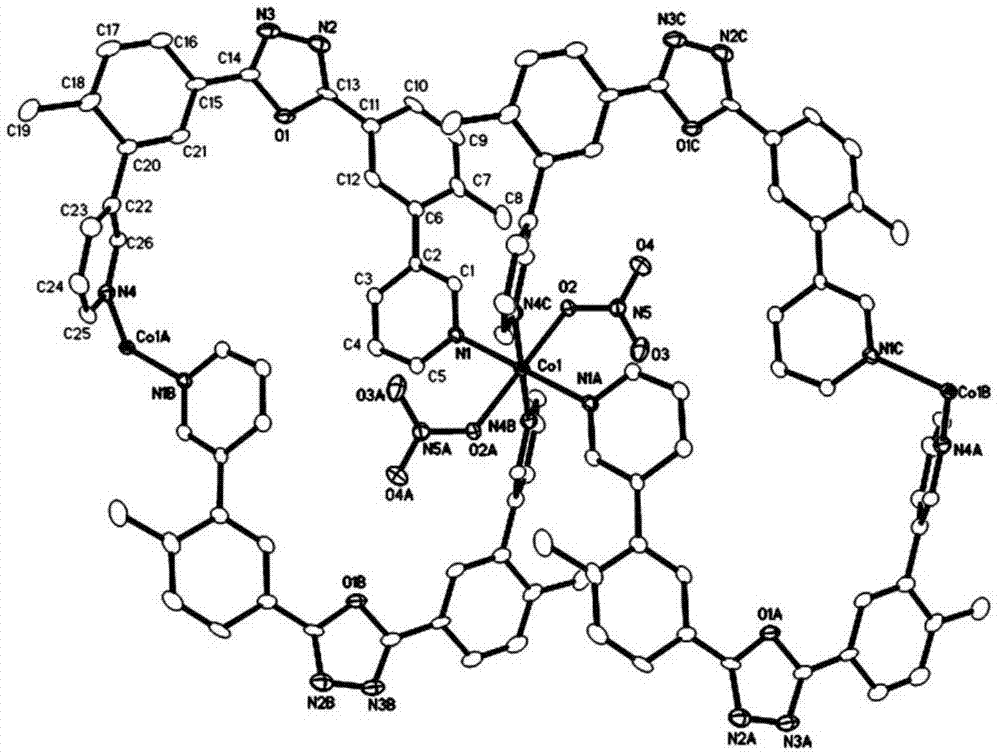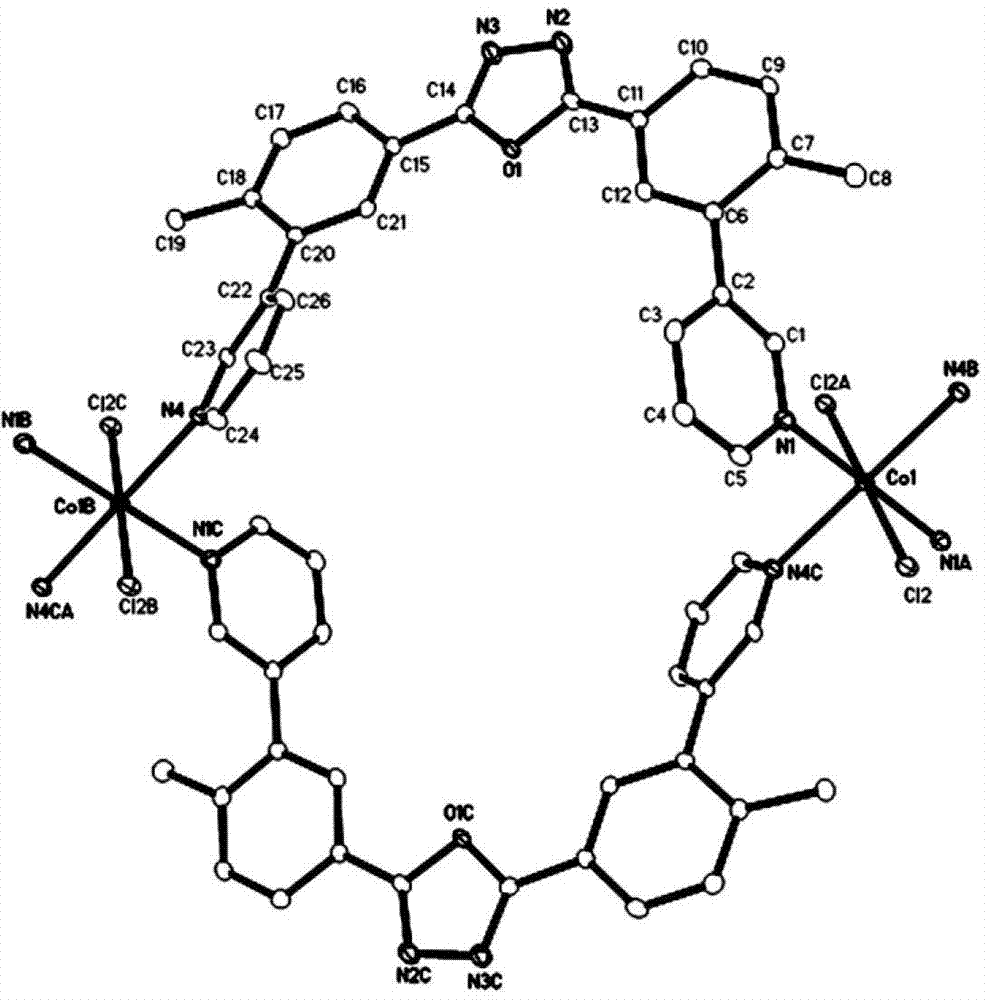Three metal organic frames based on Co(II) ion as well as synthesis method and application thereof
A metal-organic framework, ion technology, applied in cobalt organic compounds, organic chemistry, chemical instruments and methods, etc., to achieve low cost, effective separation, and rapid response.
- Summary
- Abstract
- Description
- Claims
- Application Information
AI Technical Summary
Problems solved by technology
Method used
Image
Examples
Embodiment 1
[0059] Example 1: Preparation of three metal-organic frameworks (MOFs) of Co(II) ions
[0060] 1. 6.05g (30mmol) of 3-bromo-4methylbenzoic acid, 3.77g (30mmol) of semicarbazide hydrochloride, 50g of polyphosphoric acid in a 250mL beaker, react at 160-170°C for 6h, cool, and use 10% NaOH aqueous solution Neutralize until the pH is 8-9, filter with suction, and dry in the air to obtain a crude product. Separation by column chromatography (dichloromethane: ethyl acetate = 20:1) gave white intermediate A4.28g, yield: 68.9%.
[0061] 2. Intermediate A4.08g (10mmol), pyridine-3-boronic acid 2.95g (24mmol), anhydrous potassium carbonate 4.15g (30mmol), tetrakis-(triphenylphosphine) palladium 1.16g (1mmol), 150mL (EtOH :H 2 O:toluene=1:1:1) mixed solution in 250mL there-necked bottle, N 2 Under protection, heat to reflux for 48h. Cool, separate liquids, discard the water phase, and distill off the solvent under reduced pressure to obtain a crude product, which was separated by col...
Embodiment 2
[0068] Example 2: Anion exchange-induced structural transformation and color change of metal-organic frameworks (MOFs)
[0069] a.Cl - Exchange NO in compound 1 3 - :
[0070] 0.05M K Cl saturated methanol solution stirred compound 1, IR tracking ( Figure 2-0 ), found that after 1h, no NO 3 - Peak, Cl - The exchange is complete, and the powder color changes from red to purple ( Figure 13 ). XRD trace ( figure 2 ), with the exchange of anions, the metal-organic framework undergoes transformation, gradually changing from compound 1 to compound 2. Simultaneous TGA ( image 3 ) data show that the solvent changed from 2 THF (tetrahydrofuran) to 2 CH 3 OH (methanol). After the exchange was completed, Cl was measured by ion chromatography - The percentage content is 6.94%, and the theoretical CoL 2 Cl 2 ·2CH 3 Cl in OH - The percentage content of 7.07% is basically consistent. In summary, it can be considered that NO 3 - 100% converted to Cl - .
[0071] b.Br ...
Embodiment 3
[0074] Embodiment 3: the selectivity of compound 1 to different anions
[0075] a.0.03M Cl - ,Br - , I - mixed methanol solution (Cl - :Br - : I - =1:1:1) Stir the compound for 12h. IR ( Figure 7 ) show no NO 3 - Peak, the exchange is complete. XRD ( Figure 8 ) tracking reveals that the metal-organic framework undergoes transformation with the exchange of anions. TGA ( Figure 9 ) data confirmed that the solvent changed from 2 THF (tetrahydrofuran) to 1.7 CH 3 OH (methanol). XPS ( Figure 10 ) shows that only Cl - ,Br - , Cl measured by ion chromatography - , Br - The contents are 3.95% and 6.02% respectively. . by Cl - ,Br - The content is deduced that the molecular formula is CoL 2 Cl 1.21 Br 0.79 ·1.7CH 3 OH (theoretical Cl - ,Br - The contents are 4.17%, 6.14% respectively). Converted to molar ratio n(Cl - ): n(Br - )=1.53:1. Can be regarded as NO 3 - 60.5% converted to Cl - ,39.5% converted to Br - .
[0076] b.0.03M Cl - ,Br - mix...
PUM
 Login to View More
Login to View More Abstract
Description
Claims
Application Information
 Login to View More
Login to View More - R&D
- Intellectual Property
- Life Sciences
- Materials
- Tech Scout
- Unparalleled Data Quality
- Higher Quality Content
- 60% Fewer Hallucinations
Browse by: Latest US Patents, China's latest patents, Technical Efficacy Thesaurus, Application Domain, Technology Topic, Popular Technical Reports.
© 2025 PatSnap. All rights reserved.Legal|Privacy policy|Modern Slavery Act Transparency Statement|Sitemap|About US| Contact US: help@patsnap.com



